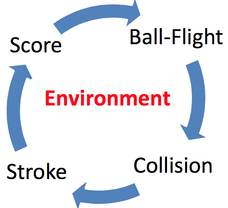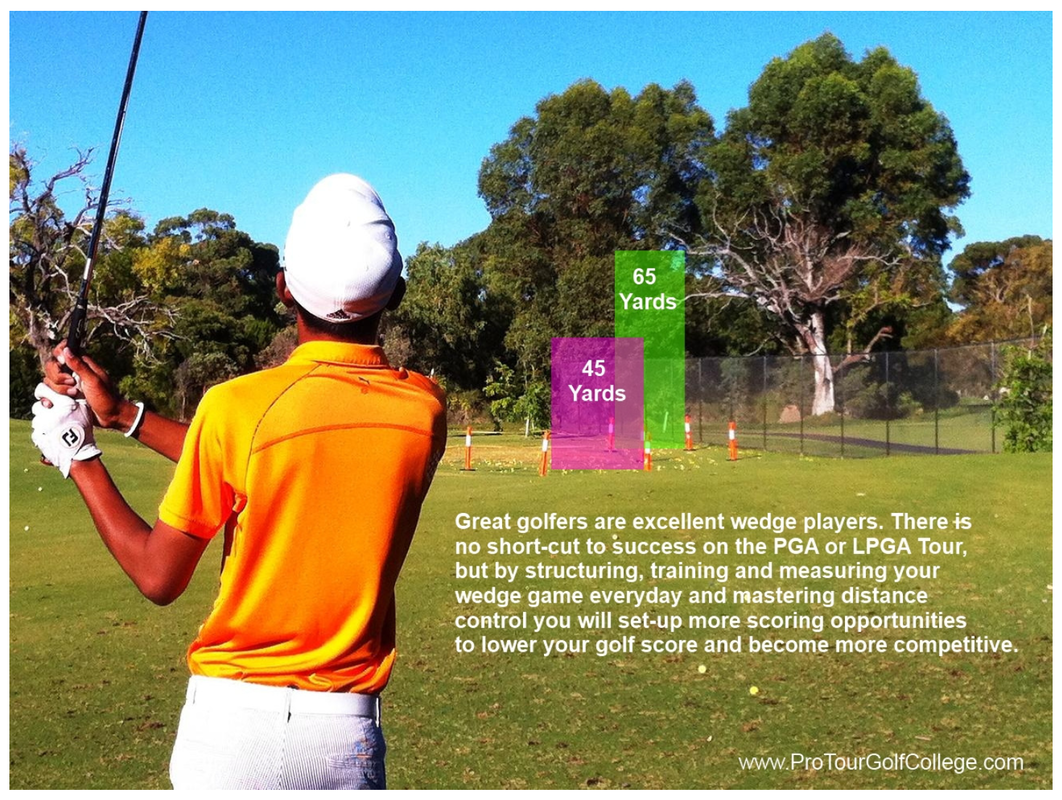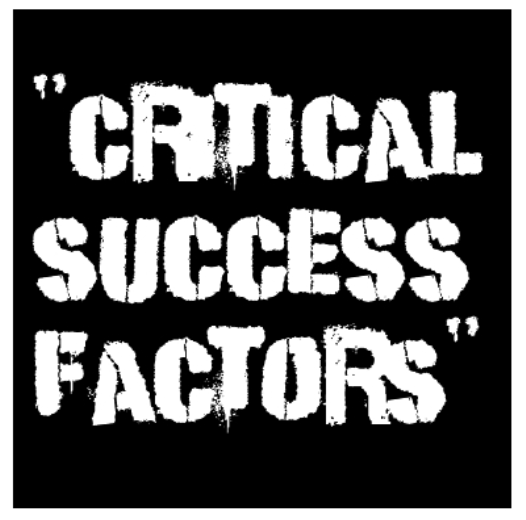|
We’re not talking about the basics of grip, aim and stance here; we’re talking about information that is very uncommon in the golf world, but common in many other sports at world championship level. Did you know that golf is one of the only sports where the “experts” still cannot make up their mind what the ideal model to teach is? In ballet, gymnastics and other highly technical sports they have adopted a model to teach upon, but golf still lags way behind. This probably explains why it's so hard to learn to play really well? As a former tour player, I never played consistently to my potential. In every round I played, I knew I left shots out on the golf course, and I really didn’t know how to improve. It also seemed like many of my fellow professionals were in the same predicament, and this led me to a career trying to find out what some of the answers were. There are lots of theories in golf books, magazines, DVD’s and on the TV on how to play golf. There aren’t many on how to play it really well. What’s the difference between playing golf, and playing it really well? In my opinion, it’s simply learning how to develop the skills to lower your golf scores. Demystifying Golf Improvement When you think about it, improving your golf game involves five factors that you have to develop a measurable degree of control over. At PTGC our students learn that one or more of these five factors will stop them from reaching their potential as a golfer. This is the same for you. Every stroke that you make on a golf course involves these five factors. The golf swing produces an impact or collision with the golf ball. The golf ball receives the information from the club head to travel forwards and upwards over a certain distance. This happens continually until the golf ball comes to rest in the hole, and the score is added up. The variable that affects your ability to do this is the environmental conditions. To improve your golf game, you need to improve your ability to control all five factors. We’re not concentrating on the golf swing, collision and ball flight part of the formula. What we are going to concentrate on is much more important; how you can train your game to lower your golf scores and become a much better golfer faster than you could have ever imagined. "To be honest, more than ninety percent of golfers we have witnessed, are wasting their time on the driving range because of the way they go about their work." The 5 Factors There is a cause-effect relationship within the five factors sequence that explains why some golfers achieve a great deal more success than others do, all things being equal. We call this “the golf success code,” and possibly this will be the first time you’ve seen it presented this way, but there’s a good reason for it; the majority of golfers we work with in our program don’t realise that these factors need to change in sequence if they want to improve their game. “Reverse every natural instinct and do the opposite of what you are inclined to do, and you will probably come very close to having a perfect golf swing.” – Ben Hogan That’s right, they would be arranged so that score is at the beginning instead of a golf swing. This would be followed by the ball flight, the impact or collision and then the golf swing. In other words we teach our students to build a better game with the end in mind--the score or outcome. Your Golf Score = Your Ball Flight = Your Collision = Your Golf Stroke ÷ The Environment I have witnessed many golfers working on some aspect of their golf swing without connecting it to a lower score – even the pros do it! You almost get the impression that they just want to get their practice over with, because they stand there and pound away at shot after shot. To be honest more than ninety percent of golfers we have witnessed are wasting their time on the driving range because of the way they go about their work. There is a better way. Tour Players Get it Wrong Too! Some years ago I was working with one of the players from the US LPGA tour and I was asked to hop on a plane and fly to the US for a couple of tournaments to help her regain some lost form. After spending some time on the range, I followed her around the golf course and tracked and measured every golf shot she played from tee to green. At the time her score average was a couple of shots higher than it needed to be for each round to comfortably make the cut and make some money. I analysed her results after the first tournament, (which she made the cut in) and sat down with her after supper and went through my findings. She was clearly of the opinion that she wasn’t putting very well because she believed she wasn’t holing enough ‘makeable’ putts to be competitive. I agreed with her, but said that there was something far more critical that she was overlooking; the effectiveness of her wedge play. On every hole that she played a wedge into the green over seventy two holes, I calculated the distance of her shot to the pin and wrote it down. After she played her shot I would race ahead of her group and measure the distance of her shot to the pin and note whether it was short, long, left or right of the hole. Then I would simply add up the putts on each green. What I determined from this analysis was that she wasn’t hitting the ball close enough to the hole to make the putts she was attempting. Her average distance from the hole was about three and a half to four metres or ten to twelve feet. From this distance a tournament professional will make less than twenty percent of these putts on average. The other interesting fact was that over seventy percent of her wedge shots were short of the hole, which made me wonder about the set-up of her wedges. It turns out that she carried a pitching wedge with a forty eight degree loft, a gap wedge with a fifty degree loft, when it was supposed to be fifty two degrees, and a sand wedge with fifty eight degrees that was supposed to be fifty six degrees. The eight degree gap between the gap wedge and sand wedge was creating distance control problems. My advice was for her to get her wedges adjusted, and start working on her wedge distance control. I developed a training plan for her and within three months she was making money and in a lot happier place mentally. Any golfer can improve their game if they start from the right end of the cause- effect relationship.
Writing a lower score on his scorecard consistently is the one key characteristic that distinguished Tiger Woods and other great golfers from all other golfers in the world. Great golfers have a score or outcome focus; whereas most advanced golfers we have worked tend to have a swing focus. What’s the difference? “A score or outcome focus enables golfers to continually find ways to improve their performances because they can work backwards looking at the different aspects of their performance to find the clues to lower scores.” In an article I read written by Steve Williams, Tiger’s ex caddie had this to say about keeping statistics; "I always keep a very detailed log of every round we play," "Stat-wise at the end of the day, end of the week, we know what we need to work on for the next round."
If you want to become a competitive golfer, you must develop the other critical success factors to lower your golf scores, and history has shown us that it’s not just about the full swing technique. Measure to Improve In business, there’s a well-known saying; “what you can measure, you can improve,” and at Pro Tour Golf College we don’t start working on the improvement process with our golfers, until we can gather enough information on their game to determine what, and how, we can help them with to achieve their goal. I was very fortunate as a young golf instructor to work with some very knowledgeable high performance coaches in golf, and particularly other sports, and it’s through this experience that I was introduced to a simple four step coaching model that they used to develop their athletes for International and Olympic competition. It’s a simple model that gives us a framework to guide our students improvement towards their goals. The 4 Step Model It is unlikely that you will have ever read about this model in any golf book or golf magazine. This model is the cornerstone of our golf instruction program, and guarantees that our student’s development is managed in a structured and well conceived way. Don’t be deceived by the obvious simplicity of this model, that’s what makes it a very valuable tool for guiding your improvement. Most of the golfers we know of do not have an approach to improvement like this. More likely, they have developed a random and haphazard approach, that is more reaction based, rather than pro-action based. If you want to improve your game, then adopt this model, and you will soon discover that with a highly structured approach to your improvement, your golf game will improve faster than any other way. Lawrie Montague & David Milne - Pro Tour Golf College Want to Know About The Unique Golf Improvement Program That Will Dramatically Transform Your Game? |
Archives
June 2019
|
Proudly Supported By
Copyright © 2011 - 2018 Pro Tour Golf College
Website Managed By Golf Performance Media
All Rights Reserved
Website Managed By Golf Performance Media
All Rights Reserved











 RSS Feed
RSS Feed



